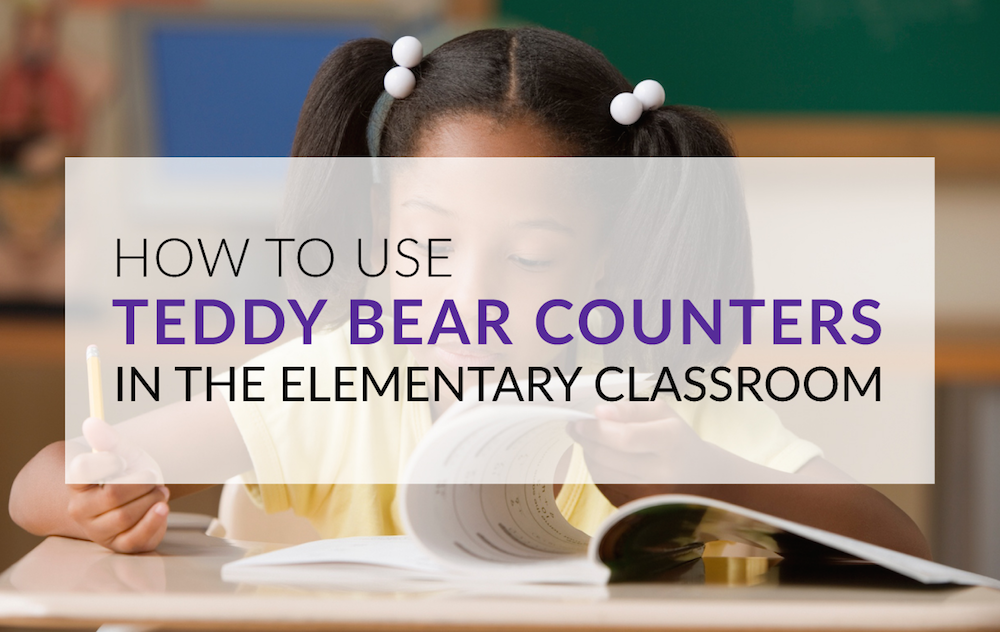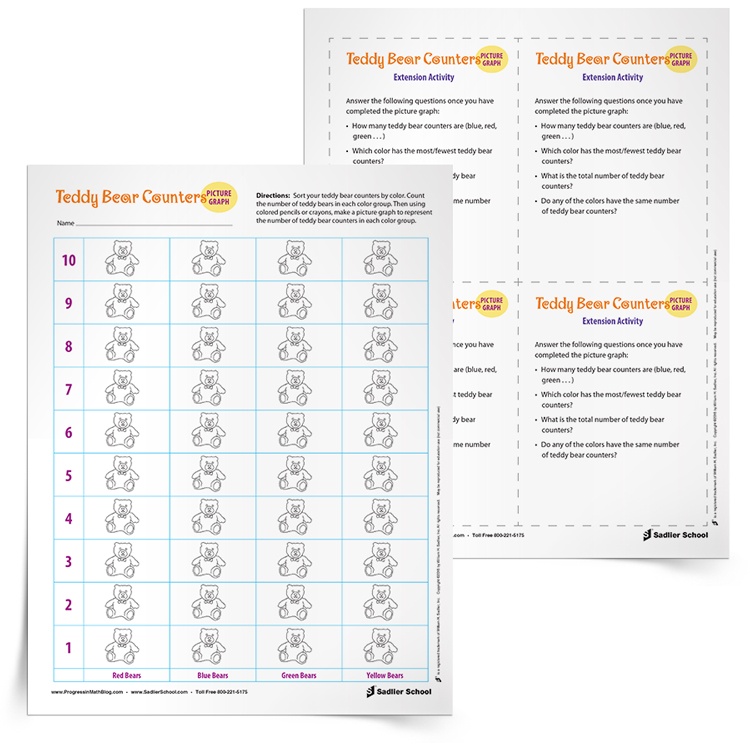February 15, 2017 k-2-counting-and-cardinality, k-2-operations-and-algebraic-thinking
How to Use Teddy Bear Counters in the Elementary Math Classroom
By: Jeff Todd
Teddy bear counters have become near and dear to many early elementary math educators. Having come from mostly a middle- and high-school teaching background, I first encountered the use of teddy bear counters in an early childhood development class. At first I thought it was simplistic, but the more I have learned about elementary mathematics, the more I see their benefit to math teachers and students alike.
BASICS OF MANIPULATIVES
Teddy bear counters are a kind of manipulative that are often used in the early elementary math classroom.
Using manipulatives, such as teddy bear counters, in math can support children’s understanding of numerous mathematical concepts! The National Council of Teachers of Mathematics (NCTM) recommends the use of manipulatives in teaching mathematical concepts at all grade levels.
Manipulatives are concrete objects that can be viewed and physically handled by students in order to model abstract concepts. The use of manipulatives provides students with a hands-on, active learning experience. A manipulative could be as simple as a dehydrated bean or as sophisticated as a 3-D printed parabola manipulative.
BENEFITS OF USING MANIPULATIVES
Educators have found that manipulatives can support students with the following (Picciotto, H. 1998):
-
Discussions about mathematical ideas and concepts
-
Verbalizing mathematical thinking
-
Visualizing mathematical concepts
-
Collaboration
-
Interconnectedness of mathematical concepts
-
Ownership of work
-
Math fluency
-
Motivation to learn
USING TEDDY BEAR COUNTERS TO MEET THE STANDARDS
Students in the early elementary grade levels can use counters in math to address mathematical standards. Here are some suggestions for using teddy bear counters in math lessons:
-
Count a group of teddy bear counters and identify any counting strategy they used
-
Sort teddy bear counters into groups by color or size
-
Count by twos or other numbers
-
Separate a set of teddy bear counters into equal and unequal groups and identify how many are in each group
-
Compare which group of teddy bear counters has fewer or more and identify how many are in each group and which group has the fewest or most
-
Create rectangular arrays of teddy bear counters (4 x 3, or 2 x 6) to foster skip counting leading to multiplication
-
Model addition and subtraction stories
-
Use the colors of the teddy bear counters to form patterns
ACTIVITY SUGGESTIONS FOR TEDDY BEAR COUNTERS
TEDDY BEAR COUNTERS PICTURE GRAPH WORKSHEET
One activity that early elementary teachers can use with teddy bear counters is a picture graph worksheet.
With the Teddy Bear Counters Picture Graph Worksheet, students are tasked with sorting and counting bears and then using the information to create picture graphs. Once students complete their graphs they will use the extension activity to answer higher-order thinking questions about their completed picture graph.
The Teddy Bear Counters Picture Graph Worksheet would make a great station on a day where you do centers. Prepare small bags of teddy bear counters, placing fifteen to twenty of varying colors in each bag. Have students sort the teddy bears by color and use the four-color or six-color teddy bear counter worksheet to record the results.
The printable download includes two different teddy bear counter worksheets so that you will be ready, whether you use four-color or six-color sets in the classroom.
Another resource teachers can use to facilitate the use of teddy bear counters in order to learn math concepts are picture books by Barbara Barbieri McGrath.
Barbara Barbieri McGrath has written a series of books with a teddy bear counters theme. The titles include: Teddy Bear Math, Teddy Bear Addition, Teddy Bear Subtraction, Teddy Bear Counting, Teddy Bear Patterns, and Teddy Bear School Day Math.
You can use these books as read-alouds or in math centers for students to use along with actual counters in order to complete activities. You can also use the teddy bear counter worksheet available in theprintable picture graph activity.
IN SUMMARY
Harnessing the power of manipulatves has proven invaluable in the teaching of mathematics. Hands-on educational experiences help students visualize math concepts and gain insights into necessary fundamentals. Through the long-term use of manipulatives students will gain a deeper understanding of mathematical concepts.
Teddy bear counters are one manipulative used in the elementary math classroom. Students in the early elementary grade levels can use counters in math to address mathematical standards and develop their number sense.
Download a picture graph worksheet to facilitate the use of counters in your classroom!





